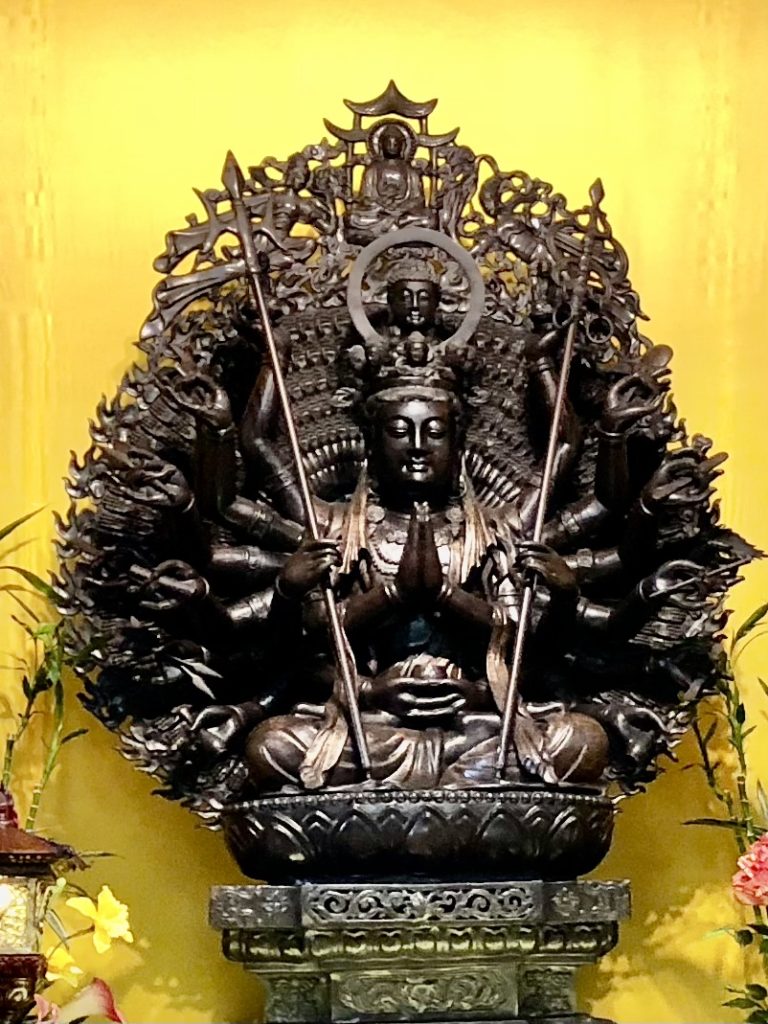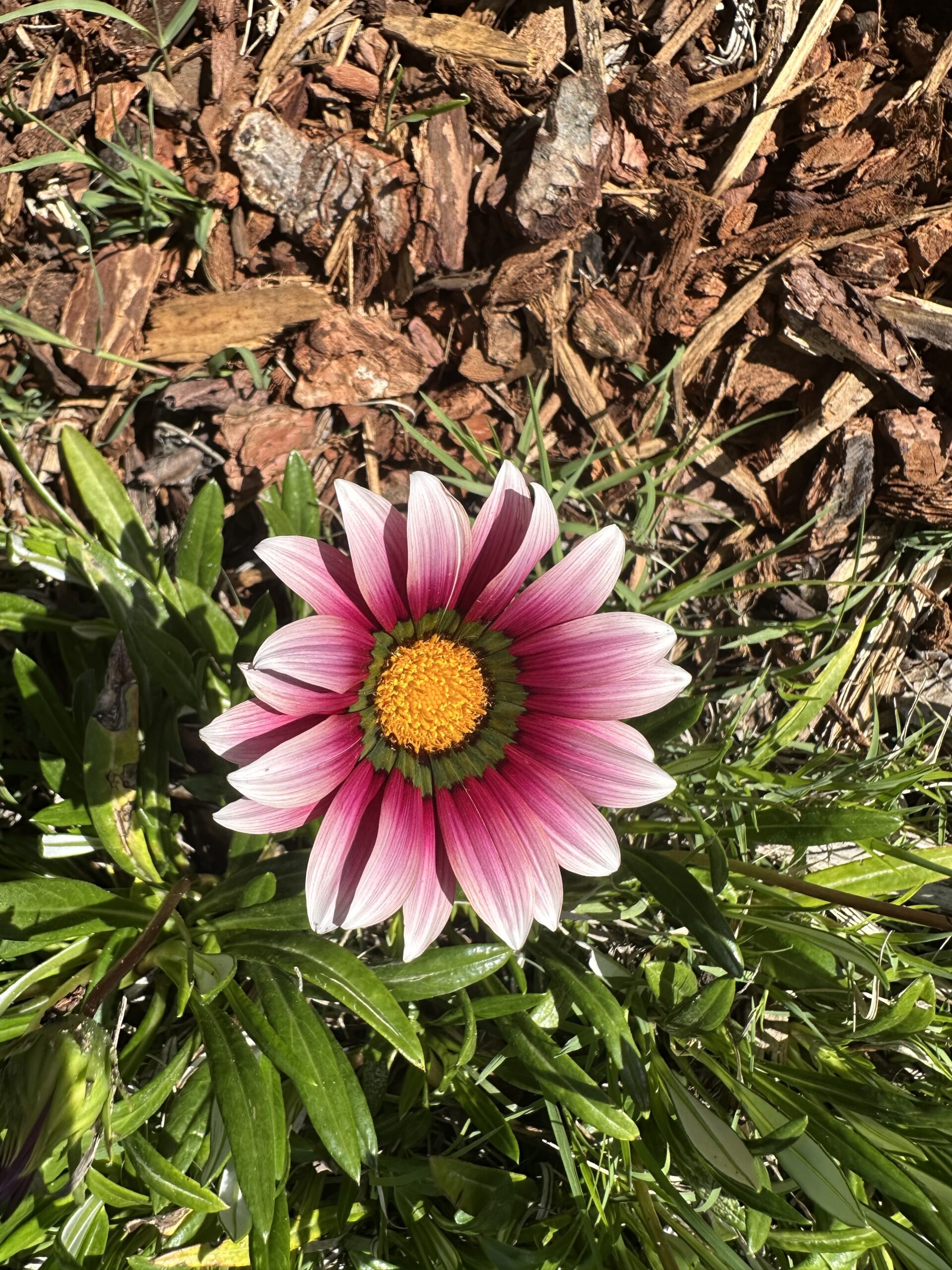
Although this was posted originally on October 6, 2022, I wanted to repost it in gratitude for this very special blessing and to include an English translation of what the Sanskrit words used in the dharani may mean. We know the power of this chant comes from the sound, but the meaning can help us appreciate the “Great Compassion” or “Maha Karuna” of the holy ones. The following translation is from the Japanese-American monk and scholar D.T. Suzuki (1870-1966), but other similar translations can also be found on the internet.
The Great Compassion Mantra, also known by its Sanskrit title as the Maha Karuna Dharani, is chanted most days at the temple. It is one of the very few mantras that we still chant using the transliterated pinyin sounds from the original Sanskrit. Sanskrit is a language of Holy syllables, where not just words are formed, but sacred sounds that have layers of meaning. It is for this reason that this mantra or dharani is chanted in Sanskrit. It is derived from the Maha Karuna Dharani Sutra, the Thousand-Handed and Thousand-Eyed Avalokiteshvara Bodhisattva’s Vast, Perfect, Unimpeded, Great-Compassionate Heart Dharani Sutra (Tripitaka No. 1060), but it may have origins that even predate Shakyamuni Buddha. The Buddha was known for introducing concepts by rebranding expressions that were popular from non-Buddhist deities as Buddhist concepts or even having a Buddhist deity portrayed as a manifestation of a well-known non-Buddhist one. For example, the “blue-necked one” is a title of Shiva, who is portrayed here as Avalokitesvara.
Great Compassion Mantra
Adoration to the Triple Treasure!
Adoration to Avalokiteśvara the Bodhisattva-Mahāsattva who is the great compassionate one!
Om, to the one who performs a leap beyond all fears!
Having adored him, may I enter into the heart of the blue-necked one known as the noble adorable Avalokiteśvara! It means the completing of all meaning, it is pure, it is that which makes all beings victorious and cleanses the path of existence.
Thus:
Om, the seer, the world-transcending one!
O Hari the Mahābodhisattva!
All, all!
Defilement, defilement!
The earth, the earth!
It is the heart.
Do, do the work!
Hold fast, hold fast! O great victor!
Hold on, hold on! I hold on.
To Indra the creator!
Move, move, my defilement-free seal!
Come, come!
Hear, hear!
A joy springs up in me!
Speak, speak! Directing!
Hulu, hulu, mala, hulu, hulu, hile!
Sara, sara! siri, siri! suru, suru!
Be awakened, be awakened!
Have awakened, have awakened!
O merciful one, blue-necked one!
Of daring ones, to the joyous, hail!
To the successful one, hail!
To the great successful one, hail!
To the one who has attained master in the discipline, hail!
To the blue-necked one, hail!
To the boar-faced one, hail!
To the one with a lion’s head and face, hail!
To the one who holds a weapon in his hand, hail!
To the one who holds a wheel in his hand, hail!
To the one who holds a lotus in his hand, hail!
To the blue-necked far-causing one, hail!
To the beneficient one referred to in this Dhāraṇī beginning with “Namaḥ,” hail!
Adoration to the Triple Treasure!
Adoration to Avalokiteśvara!
Hail!
May these [prayers] be successful!
To this magical formula, hail!
Dharani is derived from an ancient Sanskrit root for chants and melodious sounds believed to have innate spiritual and healing powers even if the sound cannot be translated and, like music, has no meaning per se. It is from the same root that gives us the words Dharma and its Pali equivalent, Dhamma. Sometimes the term is used interchangeably with mantra.
The Maha Karuna Dharani or the Great Compassion Mantra of Avalokiteshvara (Chenrezig or Guanyin in Tibetan and Chinese) is chanted daily by millions of Mahayana Buddhists around the world for its benefits of healing, protection, and purification of negative karma. It is probably second only to the Heart Mantra of Avalokiteshvara that we also chant every day. It is considered one of the most beautiful to listen to both in tonality and expression of its immeasurable benefit to all sentient beings, the very essence of the Great Avalokiteshvara’s compassionate mission.
It is believed that those who chant this mantra or dharani will obtain 15 kinds of good deaths and births that are listed in the Maha Karuna Dharani Sutra. The Sankrit text of the Dharani is also found in this sutra.
The Thousand-Armed and Thousand Eyed Avalokiteshvara representing the many aspects of the Great Bodhisattva’s compassion is celebrated in this dharani. The photo above is of a statue of the Bodhisattva at Hua Zang Si, a temple in San Francisco, California, that follows the teachings of H.H. Dorje Chang Buddha III.





Add comment